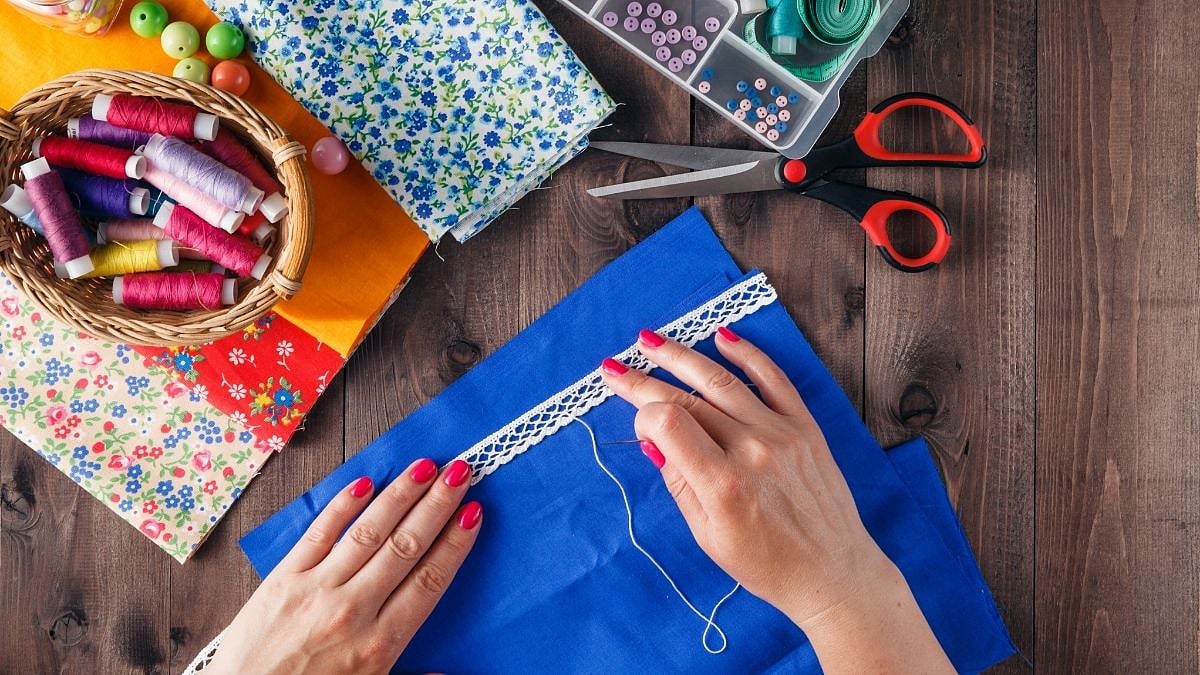A Beginner’s Guide To Designing And Stitching Your Own Clothes At Home
Learn to make clothes at home and bring your fashion dreams to life

Fashion is everywhere. From high-end models strutting the runway to an ordinary college-going student trying to decide their pick of clothes for the day. Despite being available for purchase, many enthusiasts often find themselves struggling to create their own garments from scratch. For those who wish to wear their vision in real time, making clothes at home is easy, effective, fun and pocket-friendly once you get the hang of it.
Here's a quick guide for those who wish to tailor their trendy ideas to material truths:
Preparation
Discovering your own style and taste is one of the first boxes to check off the list when heading a creative project like this. Understand your reasons for picking up this hobby and have a clear vision of what you wish to get out of it. “I started off stitching by altering my clothes myself, whether it was an inch off a pant or altering the length of a dress,” says Grace Dsouza, a mass communications student and fashion enthusiast. “It saved me a lot of time and money, from taking trips to the local tailor. At first, I found the convenience quite appealing. When I moved on to stitching whole garments on my own, I loved the process of bringing my imagination to life. Any creatively inclined person would love to literally wear their art and it's the best feeling ever to wear something you have created.”
Materials used
Once you’ve built a fair understanding of your likes and dislikes, it’s time to put those thoughts to test and step out to find the perfect material to do the job. For Grace, starting out with the “bare minimum” of a stitching machine and a handy YouTube tutorial was all she needed. Over time, additional equipment like a measuring tape, pins, stitching chalk and pattern paper were added to her arsenal. Depending on the speed of how interest builds in the hobby, you can expand your kit steadily over time as well.
Picking out fabric
Be it material or patterns, choices abound in the market when it comes to picking the right fabric. Woven fabrics like lawn, twill and double gauze tend to be more beginner-friendly while knitted alternatives become harder to work with, despite being more comfortable to wear. At the end of the day, the right fabric is one that has minimal weight and maximum quality. Once you’ve located the raw materials, give the fabric a nice wash and carefully smooth it out to avoid any large wrinkles. Pay heed to the direction of the grainline arrow and cut the fabric as indicated to avoid spilling stray threads while stitching. Trace out patterns with a chalk and cut them out neatly by placing a weight on the remaining material.
Tailoring
Start by placing your fabric pieces right side up and perpendicular to their edges. As you sew, leave at least a quarter of an inch as seam allowance to prevent the garment from being too small or large in size. If you’re feeling extra motivated, you may even use a piece of leftover fabric to test-sew before starting work on the actual pieces. Once the tailoring process is finished, use a pair of pinking shears to cut off stray ends or use techniques like zigzag stitching, especially around tricky sections like necklines. Despite the thrill it poses, it’s important to keep a few safety precautions in mind. “Working with stitching machines can be quite tricky so needles going through your fingers may not be the best experience starting off. Taking up this hobby, getting pricked once in a while is quite inevitable so make sure you are not using rusty needles which may cause infections,” shares Grace.
Financial input
Despite the initial investment it demands, the financial cost associated with this hobby tends to go down over time once you accumulate a basic set of required materials. “A store-bought home-use electric stitching machine may cost you around 10,000 rupees. That would be one of your most important initial investments,” reveals Grace. “Fabric is something that depends from project to project. For me, a small project would take around 500 rupees of fabric cost. Space is something that I would also consider while starting out this hobby as it can get quite cluttered working at home, so make sure you have your own personal space when starting out a project. But as you put in the time, you will find your way around most of these inconveniences, with finding cheaper retailers, making DIY tools, and organizing your projects well.” At the end of the day, the joy of being able to show off something of your own creation far outweighs the burden of purchasing mass-produced clothes from a store.
Put on your creative caps and evoke your dapper side by picking on the art of designing clothes at home.
RECENT STORIES
-
-
-
-
-